
“The more you know about the past, the better prepared you are for the future.” – Theodore Roosevelt. This quote resonates deeply within the vibrant history of Florida Gators football, a program anchored in tradition and legends of the Southeastern Conference. As we delve into the foundations of the Gators’ culture and the iconic atmosphere of the Swamp, it becomes clear that this isn’t just a football team; it’s a community united by its rich history and spirited rituals. The loyal fan base, legendary players, and unforgettable moments all contribute to the unique tapestry of university of Florida athletics. Join us as we explore the stories that have shaped the Gators into a powerhouse of college football.
Key Takeaways
- The Florida Gators have won three national championships, showcasing their excellence in college football.
- Steve Spurrier’s teams achieved a remarkable home record of 68-5, establishing a dominant presence at the Swamp.
- The nickname “Swamp” was popularized in the 1990s by Spurrier, enhancing the team’s identity.
- Memorable traditions, such as the Gator Chomp and the fight song, have been integral to the game day experience.
- The stadium’s capacity of 88,548 makes it one of the largest venues in college football.
- Albert and Alberta have become cherished symbols of Gator pride since their introduction in the 1970s and 1980s.
- With 34 Consensus All-Americans, the Florida Gators have consistently attracted top-tier talent.
The Birth of a Tradition
Florida Gators football is rich with college football traditions that have become synonymous with the spirit of the game. Among these is the legendary figure known as Mr. Two Bits, whose enduring legacy has helped shape the atmosphere of Gators games since the late 1940s. This tradition not only invigorates the fans but also pays homage to the exceptional history of the program through the celebration of Gator Greats.
Mr. Two Bits: The Man Behind the Legend
The inception of Mr. Two Bits traces back to 1949 when George Edmondson ignited enthusiasm among fans during a game against The Citadel. His charismatic chant rallied spectators, paving the way for a unique college football tradition that continues to resonate with Gator fans today. Each home game, the spirit of Mr. Two Bits takes form, instilling energy and excitement as fans join in chorus.
Gator Greats: Honoring the Legacy
The legacy of Mr. Two Bits seamlessly intertwines with the recognition of Gator legends. Each week, the program introduces a “celebrity Two Bits,” a special tribute to past and present Gator Greats who shaped Florida Gators football. This honor serves not only to acknowledge their contributions but also to foster a sense of community, keeping the intrinsic values of the Gators alive and well. Fans unite, celebrating their shared passion for Florida football and the traditions that define their vibrant culture.
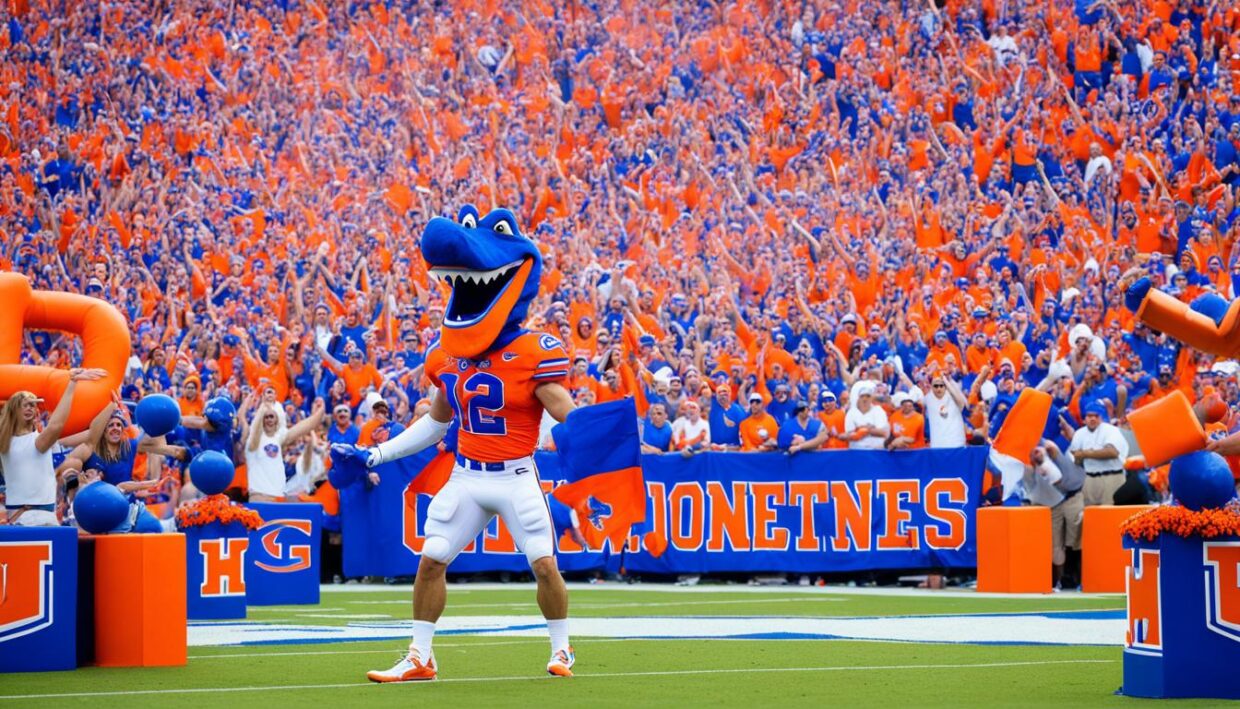
Welcome to The Swamp
The Swamp is more than just a nickname for the University of Florida football stadium; it represents a vibrant culture and intense atmosphere that echoes through the heart of Gainesville. The origins of this iconic name tie back to a moment in 1992 when Steve Spurrier introduced it, transforming Florida Field into an intimidating fortress for visiting teams. This clever piece of branding unleashed a fervor among fans, rallying Gator Nation under a bold identity that signifies dominance in college football.
Origin of the Nickname: The ‘Swamp’
Initially, the venue was known simply as Florida Field. The term “The Swamp” began as a playful yet ominous reference to the heat and humidity that envelop players and spectators on game days. With every roar of the crowd, the feelings of excitement and intimidation blend, creating a unique home-field advantage that no opposing team can ignore. The nickname captures the essence of a place where memories are made and legends are born, encapsulating the spirit that defines Gator football.
Spurrier’s Marketing Genius
Steve Spurrier’s vision extended beyond the field. His understanding of marketing allowed him to elevate not just the team’s profile but the overall experience of attending university of florida football games. By coining “The Swamp,” he positioned the stadium as a destination, where fans come not just to watch a game, but to be part of a story woven deeply into the fabric of Florida athletics. This branding strategy fostered an electrifying atmosphere, enhancing the camaraderie among fans and paving the way for future generations to celebrate every matchup within these hallowed walls.

| Event Type | Details |
|---|---|
| Kickoff Time | 7:30 p.m. for home opener against FAU |
| Food Options | Tijuana Flats, 4 Rivers Smokehouse, Chick-fil-A & food trucks |
| Parking | Limited availability, shuttle services recommended |
| Gator Walk | Begins 2 hours and 20 minutes before kickoff |
| Heat Initiatives | Misting stations, free ice, and water filling stations |
| Gates Open | Public at 5:30 p.m., premium at 5:00 p.m. |
| Last Home Game | Against No. 5 Florida State, sold-out crowd |
Florida Gators Football: A Historical Perspective
The journey of Florida Gators football began in 1906, marking the inception of a program that would grow to become an integral part of college football. In its early years, the team played against small colleges and local clubs, gradually laying the groundwork for its future. Over the years, the Florida Gators football history has been shaped by key moments and distinguished figures who contributed to notable achievements and championships.
Pioneers of the Game
From its first intercollegiate match in 1901 against Stetson to establishing significant rivalries in the 1910s, the Gators’ early efforts set the stage for future success. The team gained national recognition in the 1920s, particularly in 1928 when they led the nation in scoring under coach Charlie Bachman. This success culminated in the opening of Florida Field in 1930, a modern facility that showcased the program’s aspirations. Despite experiencing limited success in the following decades, the Gators persevered, achieving their first bowl victory in 1952. The 1960s introduced coach Ray Graves, who guided the Gators to their inaugural appearance in the AP top ten rankings. This decade also marked the beginning of strong performances, including a victory in the Orange Bowl in 1966, highlighted by quarterback Steve Spurrier, emblematic of Florida’s rising prominence.
Notable Achievements and Championships
The 1990s served as a transformative period for Florida Gators football. Under the leadership of coach Steve Spurrier, the Gators claimed their first national championship in 1996. This was followed by a further elevation of the program as coach Urban Meyer led the team to consecutive titles in 2006 and 2008, with Tim Tebow earning the Heisman Trophy in 2007. Competing in the Southeastern Conference since 1933, the Gators have established themselves as a formidable presence in college football. With a rich history of notable achievements and championships, the program stands not only as a competitive force but as a cultural icon in the world of sports.

Fan Traditions that Define Game Day
Game day for the Florida Gators is a vibrant celebration filled with unity and spirited traditions. Among the most iconic expressions of Gator pride is the gator chomp, a gesture that signifies fan solidarity and enthusiasm for the team. This simple yet powerful movement has become a hallmark of the Gator experience, celebrated by crowds as they rally together during moments of excitement.
The Gator Chomp: An Iconic Gesture
Introduced in 1981, the gator chomp embodies the essence of Gator fandom. Fans create a roaring sound while mimicking the jaws of an alligator, symbolizing strength and unity. This gesture has gained recognition and was named one of the Top 10 Traditions in College Football. As thousands of fans participate, it reinforces the unique bond that exists within Gator Nation.
We Are The Boys: The Fans’ Anthem
Deep-rooted in Florida Gators history, the anthem We Are The Boys resonates through the stands, echoing the spirit of camaraderie. Played by the band between the third and fourth quarter since the 1940s, the song invigorates fans as they join in unison. Over 90,000 attendees stand together, lock arms, sway, and passionately sing the anthem, creating an electrifying atmosphere in the stadium. This tradition exemplifies the community spirit that defines football game day traditions within Gator Nation.

Memorable Game Day Songs
Game day at The Swamp is not just about football; it is also a celebration of music that unites fans and creates an unforgettable atmosphere. Among the myriad of game day songs that echo through the stadium, “I Won’t Back Down” serves as a powerful tribute to the late Tim Tebow and Gainesville’s own Tom Petty. This iconic song, played to honor Petty’s legacy, resonates deeply with fans, particularly since its debut in 2017. Another staple is the cherished Gator Fight Song, which rallies fans and is a testament to the pride felt in Gator Nation.
I Won’t Back Down: A Tribute to Tim Tebow
The emotional connection fans share with “I Won’t Back Down” reflects the spirit of resilience that Tim Tebow exemplified during his time at the University of Florida. This song has become synonymous with game day energy and is played at key moments throughout the game, ensuring that Petty’s influence on Gators football remains strong. The tribute to Petty is not limited to the song; it also evokes memories of his performances and his lasting ties to Gainesville, making it a fitting addition to the gameday soundtrack.
The Gator Fight Song: A Rallying Cry
Another unforgettable moment in The Swamp comes from the Gator Fight Song. This anthem has been a mainstay in the hearts of Florida Gators fans, creating an electrifying atmosphere before, during, and after games. Known for its catchy tune, the Gator Fight Song symbolizes the collective strength and spirit of the Gator community. The song is performed enthusiastically, especially in high-stakes moments, fueling the fervor that underpins the game day experience.
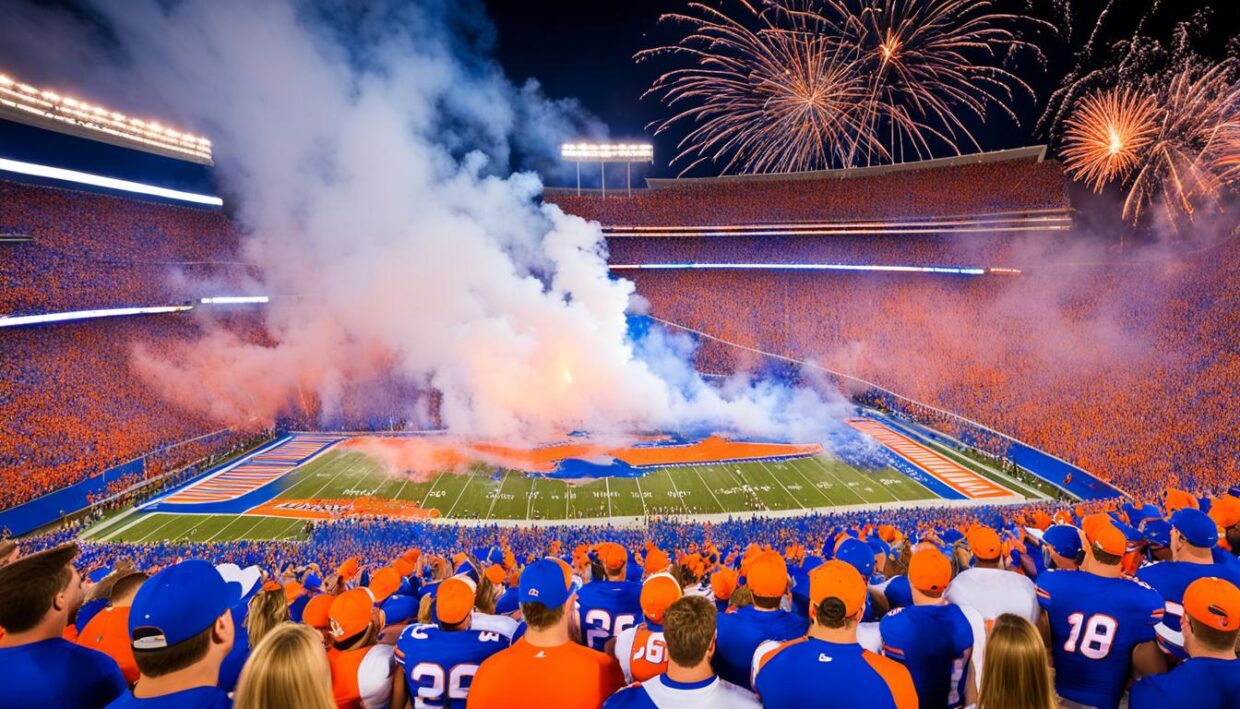
Celebrating Gainesville’s Culture
Gainesville culture thrives through its deep connection with Gator Nation. The vibrant atmosphere manifests during football season, where traditions and local cuisines come together for an unparalleled experience on game days. The sense of community unites fans, enriching the overall spirit that accompanies each match at Ben Hill Griffin Stadium, which accommodates over 88,000 ardent supporters.
The Impact of Gainesville on Gator Nation
The relationship between Gainesville and Gator Nation enhances both the sporting experience and local life. One of the highlights of the football season is the tradition of elaborate tailgating, where fans gather to celebrate their love for the team. The excitement of game days generates significant economic benefits for the community, as restaurants and local businesses thrive with increased foot traffic. Events like Chomp the Block, launched in 2018, have become essential, bringing families and friends together before home games with food, drinks, and live music. This event fosters community spirit, connecting fans while showcasing Gainesville’s local artists.
Local Cuisine and Traditions During Game Days
Local cuisine plays a crucial role in the overall game day experience. Fans enjoy a variety of dishes, highlighting Gainesville’s culinary diversity. Food trucks and local restaurants offer a taste of the region, providing supporters with delicious options before heading into the stadium. The vibrant food scene, combined with community-centric events like Chomp the Block, emphasizes the importance of local cuisine in engaging fans. It reflects a unique partnership between the university and the city’s businesses.
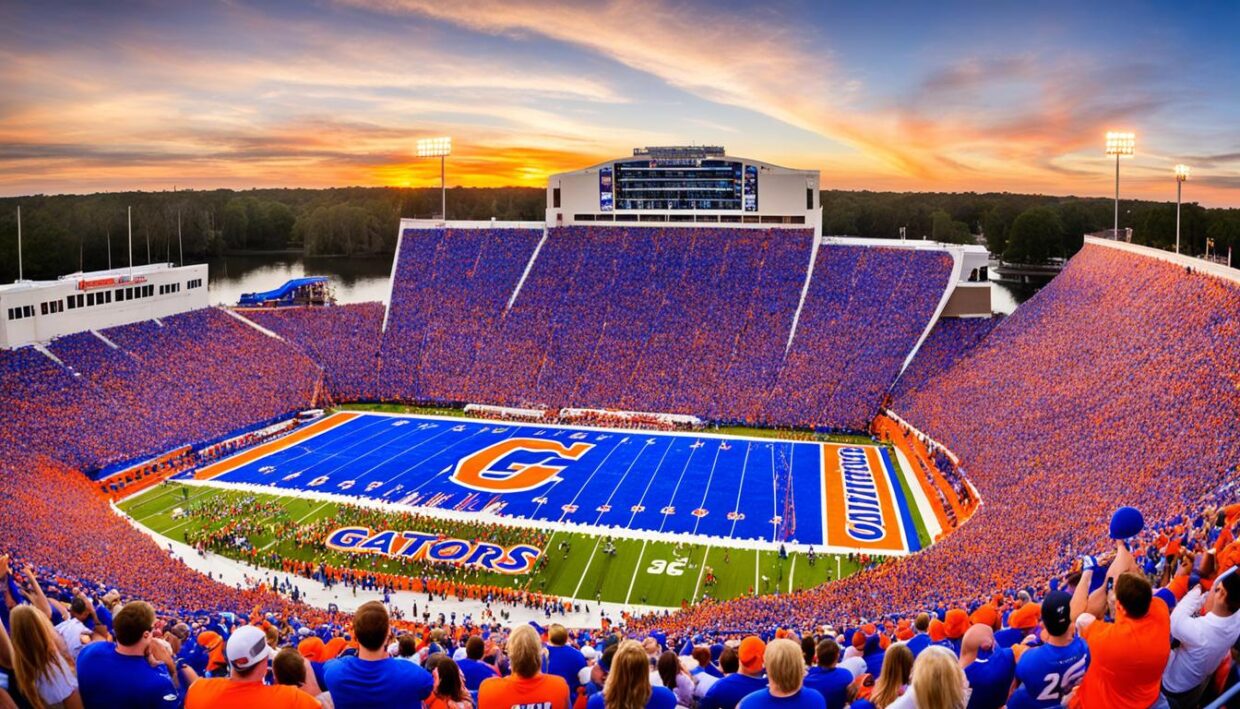
Statues and Ceremonial Honors
The University of Florida proudly commemorates its rich football legacy through the enduring symbols of past brilliance: the life-sized statues of its Heisman Trophy winners. These remarkable figures, located outside Ben Hill Griffin Stadium, serve as a testament to the remarkable achievements of Florida’s top players and the impact they had on the program.
Heisman Winners: Celebrating the Greatest
Three legendary athletes stand immortalized in bronze, representing the pinnacle of college football excellence. These Heisman Trophy winners include:
- Steve Spurrier (1966) – The first to claim the prestigious award, Spurrier threw for over 4,800 yards and 37 touchdowns during his career. His leadership not only earned him individual accolades but also led the Gators to six Southeastern Conference championships and a national title in 1996.
- Danny Wuerffel (1996) – Known for his prolific passing, Wuerffel threw for more than 3,600 yards and 39 touchdowns in a single season, contributing significantly to the Gators’ success.
- Tim Tebow (2007) – A dual-threat quarterback, Tebow made history with 32 touchdown passes and 23 rushing touchdowns, becoming the first player to achieve at least 20 touchdowns while running and passing in the same season.
These statues, weighing between 1,700 and 2,000 pounds each, stand proud on the west side of the stadium near the skybox entrance. Unveiled during halftime of Florida’s spring football game, they reflect the deep connection between the Gators and their storied past.
Commemorative Events at The Swamp
In addition to the physical representations of these legends, fans gather for various commemorative events that recognize the legacy of these athletes. These events reinforce the importance of the heisman trophy within the culture of the Gators, fostering a sense of unity among alumni, current students, and passionate supporters. The dedication of these statues and the ceremonial honors accompanying them showcase the university’s commitment to preserving its history and celebrating the achievements of its most exceptional talents.
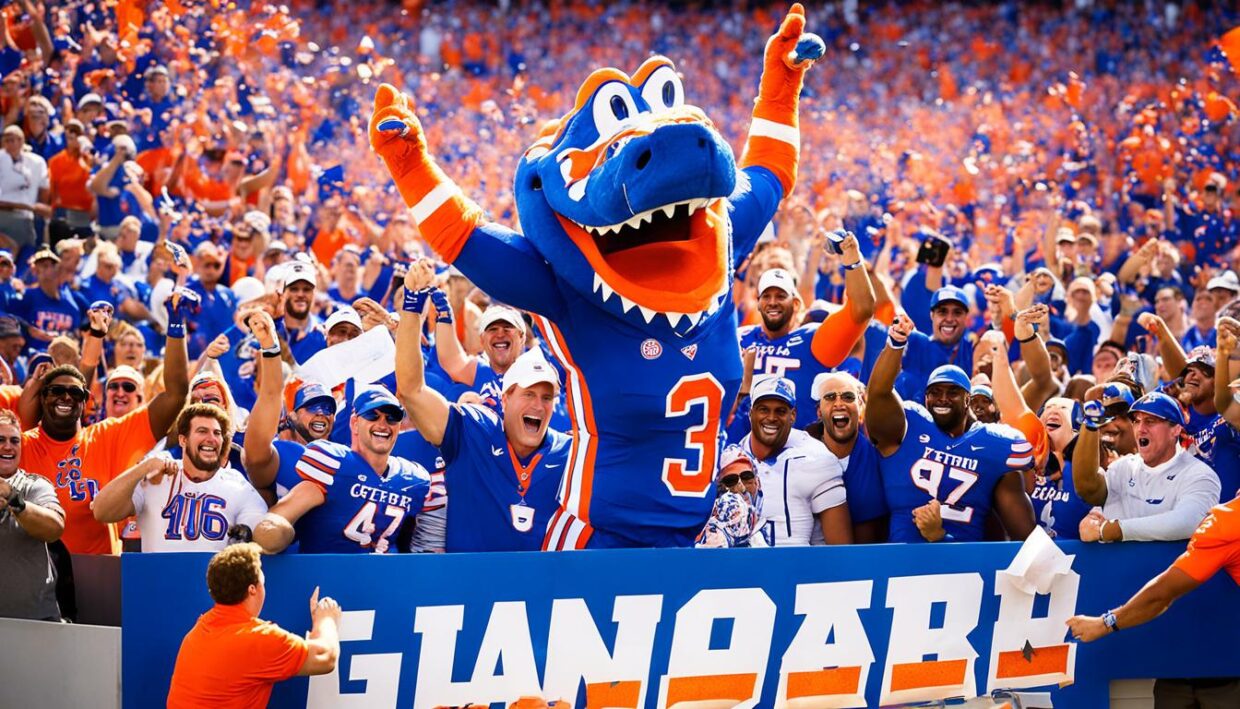
Urban Meyer Era
Urban Meyer brought a transformative approach to Florida Gators football, marking a pivotal shift in the program’s trajectory. From 2005 to 2010, his coaching prowess elevated the Gators to new heights, culminating in two national championships in 2006 and 2008. His emphasis on discipline, strategy, and player development contributed significantly to this Florida Gators football transformation. This era not only defined the Gators but also shaped the landscape of college football during Meyer’s tenure.
Transforming Florida Gators Football
Meyer’s intense coaching style and focus on perfection were vital during his six-season tenure at Florida. With a remarkable record of 65 wins against 15 losses, Meyer’s leadership transformed the team into a national powerhouse. His tenure was characterized by a winning percentage of .854, making him one of the most successful active coaches at that time. Under his guidance, the Gators adopted a winning mentality that resonated throughout the program.
Key Players During Meyer’s 2006 and 2008 Seasons
The success of the Gators during the Meyer era can be attributed largely to the remarkable contributions of several key players. Notable names include Tim Tebow, who emerged as a standout leader and quarterback, and Percy Harvin, a dynamic playmaker whose versatility was crucial in pivotal games. This table highlights some of these key players and their significant contributions during the championship seasons:
| Player | Position | 2006 Season Stats | 2008 Season Stats |
|---|---|---|---|
| Tim Tebow | Quarterback | 3,286 passing yards, 32 TDs | 2,746 passing yards, 30 TDs |
| Percy Harvin | Wide Receiver | 595 receiving yards, 3 TDs | 850 receiving yards, 5 TDs |
| Brandon Spikes | Linebacker | 53 tackles | 76 tackles |
| Jeffrey Demps | Running Back | 315 rushing yards, 3 TDs | 1,364 rushing yards, 10 TDs |
This impressive roster played a pivotal role in securing the Gators’ national titles, illustrating the depth and talent within the program during Urban Meyer’s remarkable coaching tenure.
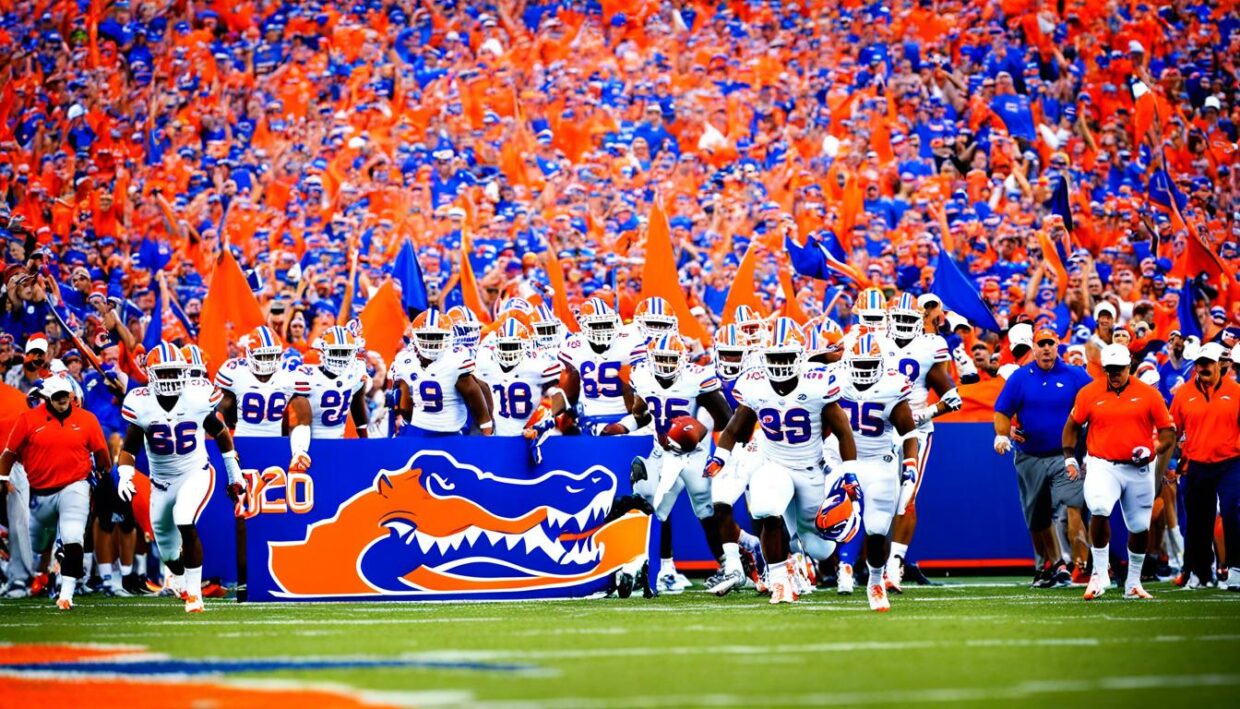
Tim Tebow Highlights
Tim Tebow’s career at the University of Florida serves as a beacon of excellence and determination. His journey is characterized by many defining moments that marked him as a standout player in college football. The tim tebow highlights reflect not only his individual prowess but the essence of Gator Nation’s spirit.
Defining Moments of His Career
Throughout his time with the Florida Gators, Tebow established numerous records that showcased his unique talents. Notably, he became the first FBS player to throw and run for at least 20 touchdowns in a single season in 2007. His impressive stats include:
- 9,285 passing yards
- 88 passing touchdowns
- 2,947 rushing yards
- 57 rushing touchdowns
He led the Gators to a record of 35-6 as a starter. Key highlights include the iconic jump pass against LSU in 2006 and a touchdown pass to Riley Cooper in the 2008 SEC Championship game, which secured Florida’s title.
His Lasting Impact on Gator Nation
The impact on Gator Nation from Tebow’s tenure remains profound. He broke numerous records, including surpassing Herschel Walker’s SEC rushing touchdown record with his 50th career touchdown in 2009. His accolades include:
- First player to win multiple Maxwell Awards in consecutive years (2007 and 2008)
- First freshman to win the Heisman Trophy, the Sullivan Award, the Davey O’Brien Award, and the Maxwell Award in 2007
- Holds five NCAA, 14 SEC, and 28 Florida Gators records
Tim Tebow’s legacy endures, serving as an inspiration for both current and future athletes in Gator Nation.
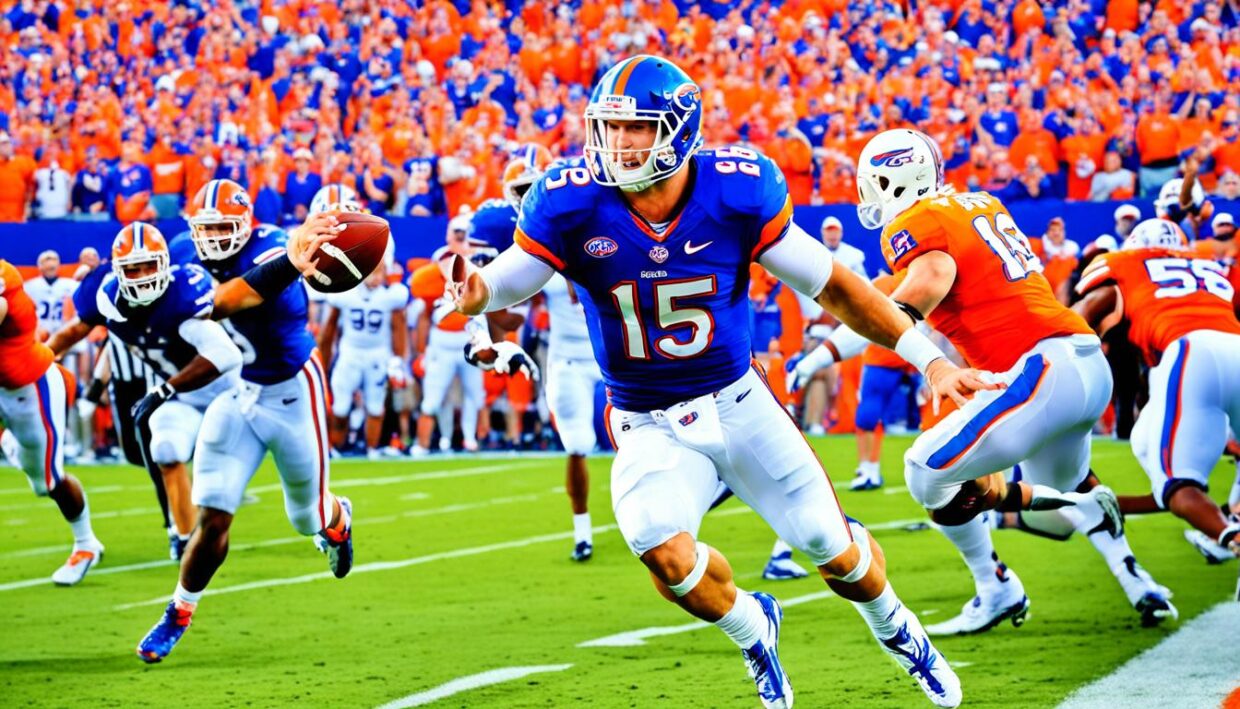
Unique Gator Mascots: Albert & Alberta
The mascots of the University of Florida, Albert and Alberta, have become cherished symbols within the Gator Nation. These unique gator mascots first emerged in the mid-20th century, bringing an added layer of excitement and festivity to football games. Their bright costumes and engaging personalities enrich the overall experience for fans and players alike.
The Story Behind the Mascots
Albert made his debut at Florida football games in 1957, while the costumed version was introduced in 1970. Alberta joined the ranks as the female counterpart in 1984. The enduring appeal of albert and alberta continued into 2015 when both received new, lightweight costumes designed to suit Florida’s warm climate. The mascots serve diligently at over 400 events each year, engaging fans with 15 to 20 hours of appearances weekly.
The Cultural Significance of Albert and Alberta
These mascots represent more than just spirited entertainment; they carry deep cultural significance within the Gator community. Albert was recognized as the No. 1 mascot by Sports Illustrated On Campus in June 2007, marking a high point in the legacy of gator mascots. Both Albert and Alberta have been featured in children’s literature, contributing to their role as cultural icons. Their social media presence boasts tens of thousands of followers, highlighting their connection with fans across generations.

The Fans: Gator Nation
The vibrancy of Gator Nation stems from its diverse and passionate community of fans. These individuals, united by a shared love for Florida Gators football, create an electric atmosphere both in the stadium and online. The blend of backgrounds and experiences within the fan base enriches the overall culture of support for the team, allowing for an inclusive environment that welcomes everyone.
Diversity and Community of Gator Fans
The heart of Gator Nation lies in the unique diversity of its supporters. Fans come from various walks of life, each contributing their personal stories that enhance the communal spirit. The excitement of game days brings together families, students, and alumni alike, all joining to cheer on the Gators. This strong sense of community fosters loyalty and encourages lifelong connections among fans.
The Role of Social Media in Gator Nation
In contemporary times, the social media impact has revolutionized how Gator Nation connects. Platforms like Twitter, Instagram, and Facebook allow fans to share their experiences, celebrate victories, and engage with fellow supporters across the nation. This digital interaction not only strengthens relationships among the community of fans but also amplifies their voices, enhancing the visibility of Gators football. Real-time updates, fan-created content, and virtual conversations keep the spirit of Gator Nation alive, even beyond the game day.

Game Day Atmosphere in The Swamp
The game day atmosphere in The Swamp at Ben Hill Griffin Stadium creates an unforgettable experience for Florida Gators fans. Vibrant traditions and an intense rivalry spirit elevate the excitement, particularly when facing fierce opponents like Florida State and Georgia. The combination of passionate fans, festive tailgates, and a rich history sets the stage for truly special experiences.
What Makes It Special for Fans
The Gator Walk Village opens three to four hours before kickoff, offering fans an early chance to engage in the game day festivities. A water station provides 2,500 12-ounce bottles at just one dollar each, ensuring attendees stay refreshed. Food truck options on University Ave. start serving delicious fare two-and-a-half hours before the game. Throughout the event, various former championship teams are honored, adding to the historical significance of each match. The fan engagement reaches a peak when the ‘Pride of the Sunshine’ entrances the field, prompting fans to stand and cheer enthusiastically. The Gators Food Patio, featuring popular spots like Gator BTW and Sonny’s BBQ, continues to serve until midway through the third quarter, allowing supporters to savor local flavors while cheering for their team.
Rivalries That Define the Experience
The thrill of rivalry games undeniably amplifies the game day atmosphere. With the stadium accommodating up to 90,000 Gator fans, it ranks among the loudest environments in college football. In particular, the noise during a 2019 match against Auburn left a significant impact on the opposing team’s performance. Although The Swamp does not hold the highest-ranking SEC stadium status for fan engagement, it remains a top contender for creating lasting memories during quintessential matchups. For Florida Gators players and fans alike, each game is not merely a sport; it’s a celebration of tradition, unity, and fierce competition.
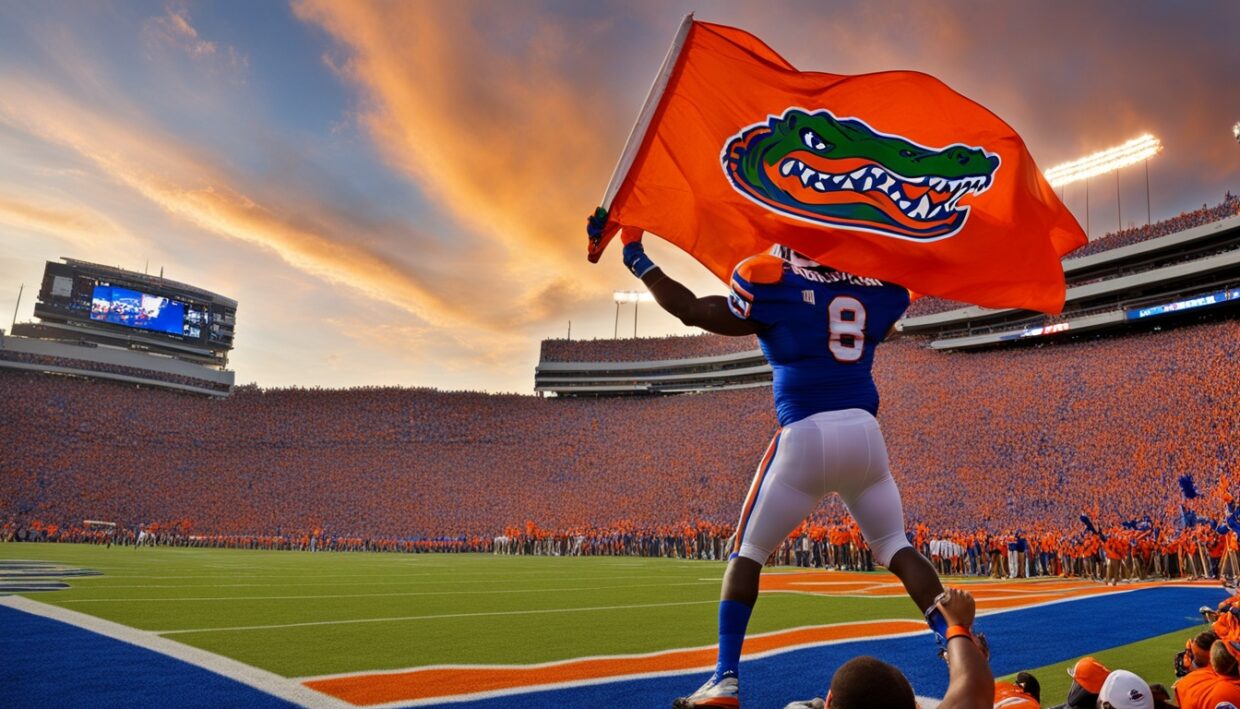
Support and Growth of University of Florida Athletics
The landscape of university of florida athletics is continually reshaped by the integration of innovative funding strategies and community engagement. Achieving success in collegiate sports is not solely dependent on athletic performance; substantial financial resources play a pivotal role. Effective funding enhances facilities, supports recruitment, and facilitates strategic initiatives, thereby promoting the long-term growth of the program.
The Importance of Funding and Resources
Financial backing is critical in maintaining a competitive edge in college athletics. The University Athletic Association (UAA) has made significant strides in financial growth, reporting a revenue of $190 million during the 2022-23 school year. This achievement places Florida athletics among the top revenue-generating programs in the nation. Support from Gator Boosters and additional contributions have proven vital in resources allocation.
- Gator Boosters contributed $38.4 million to the annual budget.
- The UAA allocated 10% of its operating budget for direct support to the University of Florida.
- Recent budget increases have been requested to further enhance programs and facilities.
Future of Florida Gators Football
Looking toward the future, the outlook for Florida Gators football is robust. Initiatives such as the UF & Sport Collaborative and AI-Powered Athletics are reshaping how performance data is utilized. By embracing cutting-edge technology and analytics-driven strategies, Gators athletics aims to improve not only athletic performance but also student-athlete wellbeing.
Spencer Thomas, spearheading the performance analytics initiative, emphasizes the integration of wearable sensor data for enhanced athlete training and competition preparation. The commitment to developing a comprehensive database of student-athlete performance will empower coaches and players to make informed decisions, solidifying the program’s stature and competitiveness.

Historical Rivalries in SEC Football
The Florida Gators have cultivated a rich tapestry of historical rivalries that define their legacy in SEC football. Among these, the Florida State games and the Georgia rivalry stand out, showcasing fierce competition and unforgettable moments. Each matchup is steeped in tradition, delivering thrill and intensity that resonate with fans year after year.
Memorable Matches Against Florida State
The Florida State Seminoles have long been a significant rival for the Gators. Their clashes are marked by high stakes, electrifying plays, and passionate fan engagement. Over the years, the Florida State games have produced several iconic moments that remain etched in the memories of both teams’ supporters. Matches often determine playoff aspirations and state bragging rights, making every encounter a must-watch event.
The Significance of Georgia Rivalry
The Florida-Georgia rivalry has been a cornerstone of SEC football since its inception. With a history that dates back to at least 1904, this intense matchup has seen the two teams meet 101 times, with Georgia holding a narrow edge in the all-time series. Notable for its unyielding spirit, the rivalry has delivered dramatic encounters such as Georgia’s 75–0 victory in 1942 and the Gators’ impressive seven-game winning streak from 1990 to 1996. The game, frequently held in Jacksonville, has evolved into a spectacle that fuels community pride and economic vitality for the area. Its financial impact is significant, generating millions annually and fostering local tourism. This enduring rivalry encapsulates the heart and spirit of college football, solidifying its place in Gator lore.
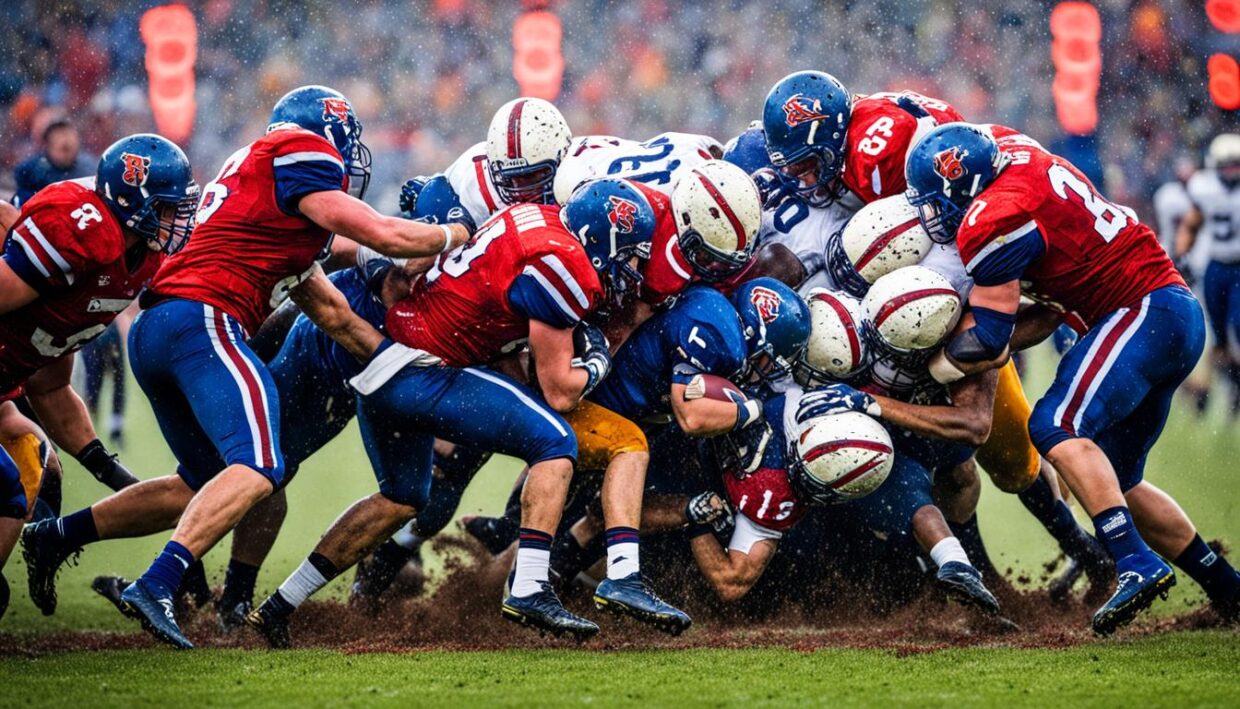
Conclusion
Florida Gators football stands as a beacon of rich traditions, fierce competition, and dedicated fan support. Despite a challenging previous season where the team finished 5-7 and missed the bowl games for the first time since 2017, the program’s resilience shines through as it gears up for a promising future. Quarterback Graham Mertz showcased impressive skill in his debut with 2,903 passing yards and 20 touchdowns, laying a solid foundation for the Gators’ offensive strategy. Furthermore, the addition of freshman DJ Lagway, who amassed extraordinary stats in high school, indicates a bright trajectory for the team’s performance.
As the Gators navigate a rapidly evolving landscape in college football, challenges remain, including those related to recruiting, coaching stability, and game management. With coach Billy Napier under scrutiny, the commitment from the community and its fan base is more crucial than ever. This commitment not only honors the storied past of Florida Gators football but also fuels aspirations for the future of the program.
While adapting to the complexities brought about by NIL deals and the transfer portal, the dedication to excellence and the deep-rooted traditions of Gator Nation will play a pivotal role in achieving renewed success. Anticipation builds for the upcoming season and the next chapter in Gators football history, where every challenge presents an opportunity for growth and achievement.

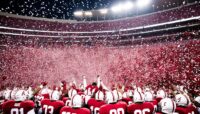
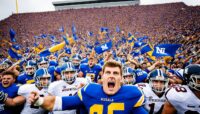


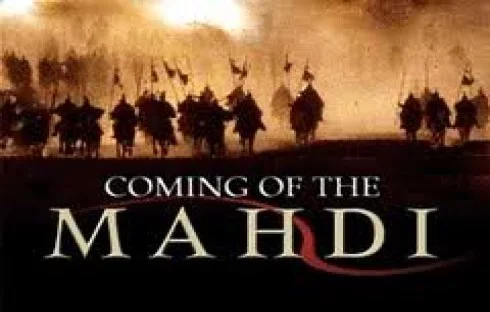













Be the first to leave a comment